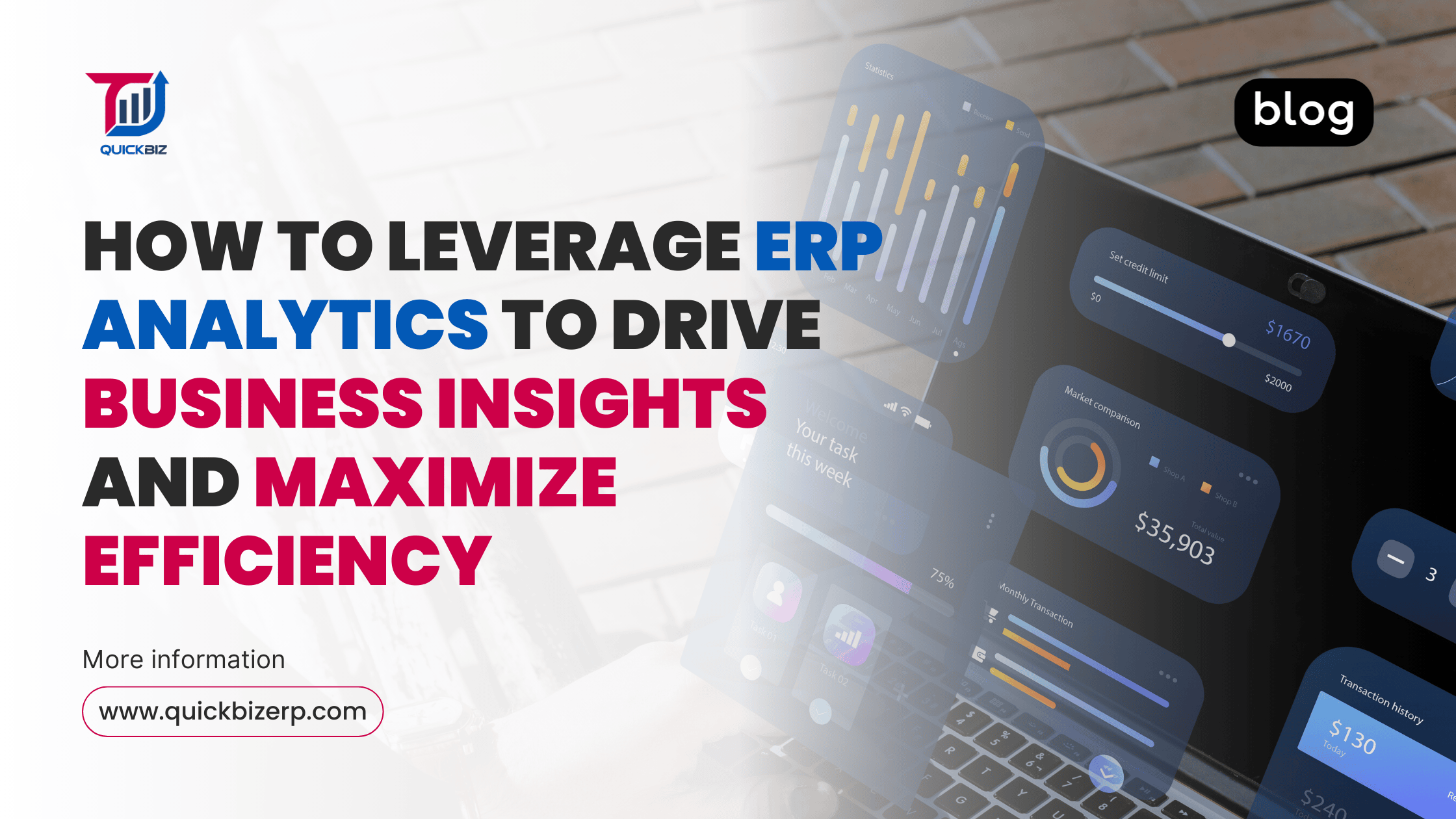How to Leverage ERP Analytics to Drive Business Insights and Maximize Efficiency

Introduction
In an era where data is the backbone of decision-making, businesses must harness their datas full potential to stay competitive. ERP analytics serves as a powerful tool, enabling organizations to turn raw data into actionable insights. By leveraging ERP analytics, businesses can uncover inefficiencies, streamline operations, and make informed strategic decisions. This blog explores the core concepts of ERP analytics, its significance, and a step-by-step guide to effectively utilizing it for enhanced business outcomes.
What is ERP Analytics?
Definition and Purpose
ERP analytics involves analyzing data collected through Enterprise Resource Planning (ERP) systems. These tools provide businesses with a unified view of operations, helping identify trends, patterns, and opportunities for improvement.
Key Features of ERP Analytics Tools
- Dashboards: Offer real-time data visualization for quick decision-making.
- DPredictive Analytics: Use historical data to forecast future trends.
- Customizable Reports: Tailored insights for specific business functions.
The Role of ERP Analytics in Organizational Success
By integrating analytics into ERP systems, businesses gain visibility across all departments. This enhances efficiency, minimizes errors, and drives strategic planning, giving companies a competitive edge. Learn more about integrating ERP systems seamlessly.
Main Content
1. Understand Your Data Sources
To harness the power of ERP analytics, you must first identify critical data points across departments. Consolidating data from disparate sources ensures accuracy and relevance.
- Key Action: Implement data integration protocols to unify data from sales, finance, HR, and other functions.
- Why It Matters: Accurate data integration enables seamless analysis and decision-making.
2. Set Clear Objectives for Analytics Implementation
Define clear business goals and Key Performance Indicators (KPIs) to guide analytics implementation. These objectives should align with your organization’s overarching strategy.
- Example Goals: Increase operational efficiency by 20%, reduce inventory costs, or improve customer retention rates.
- Pro Tip: Collaborate with stakeholders to ensure that analytics aligns with cross-functional goals.
3. Invest in the Right ERP Analytics Tools
Choose analytics tools tailored to your business needs. Look for solutions offering real-time insights, scalability, and customization options.
- Top Features: AI-driven insights, user-friendly interfaces, and mobile compatibility.
- Recommended Tools: Explore platforms like SAP Analytics Cloud, Oracle Fusion Analytics, and Microsoft Power BI.
4. Train Teams to Use ERP Analytics Effectively
Investing in technology is only half the battle; user adoption is equally important. Train your workforce to leverage analytics tools effectively.
- Action Plan: Conduct workshops, provide user manuals, and create a culture of continuous learning.
- Outcome: Teams empowered to make data-driven decisions.
5. Leverage Predictive and Prescriptive Analytics
Go beyond descriptive analytics by using predictive and prescriptive models to anticipate future scenarios and recommend actions.
- Example: Predict inventory shortages and automatically suggest reordering.
- Impact: Improved efficiency and reduced costs across supply chain operations.
6. Monitor and Refine Analytics Strategies
Analytics is not a one-and-done process. Regularly review performance metrics to refine your strategies and stay ahead of market trends.
- Key Focus: Use feedback loops to identify gaps and implement continuous improvement processes.
- Best Practice: Schedule monthly analytics reviews with cross-departmental teams.
Common Challenges in Using ERP Analytics
- Overwhelming Data Volume Without Actionable Insights:
- Solution: Prioritize relevant metrics and focus on data visualization techniques.
- Lack of User Adoption and Understanding:
- Solution: Offer comprehensive training programs to build confidence in analytics tools.
- Inconsistent or Incomplete Data Integration:
- Solution: Invest in robust integration tools and protocols to ensure data consistency.
Conclusion
ERP analytics is a game-changer for businesses looking to thrive in a data-driven world. By understanding your data sources, setting clear objectives, investing in the right tools, and fostering a culture of data-driven decision-making, you can unlock your ERP system's full potential.
Adopting a structured and goal-oriented approach ensures that ERP analytics becomes an invaluable asset, driving insights, maximizing efficiency, and enabling long-term success.
Start leveraging ERP analytics today to transform your business into a smarter, more agile enterprise!

